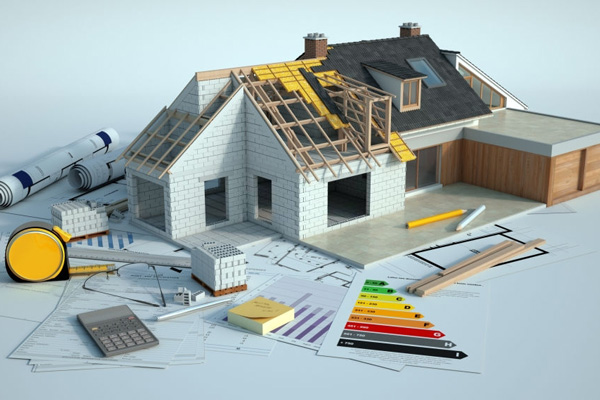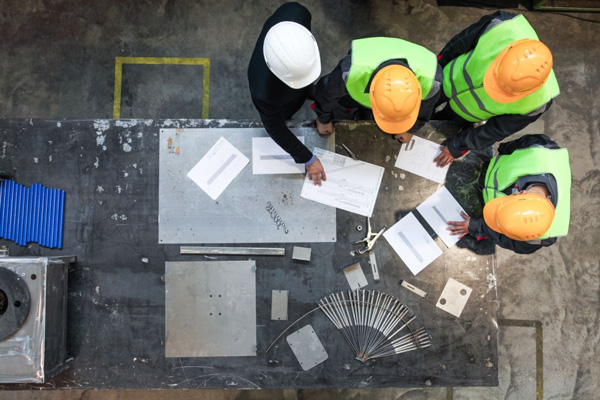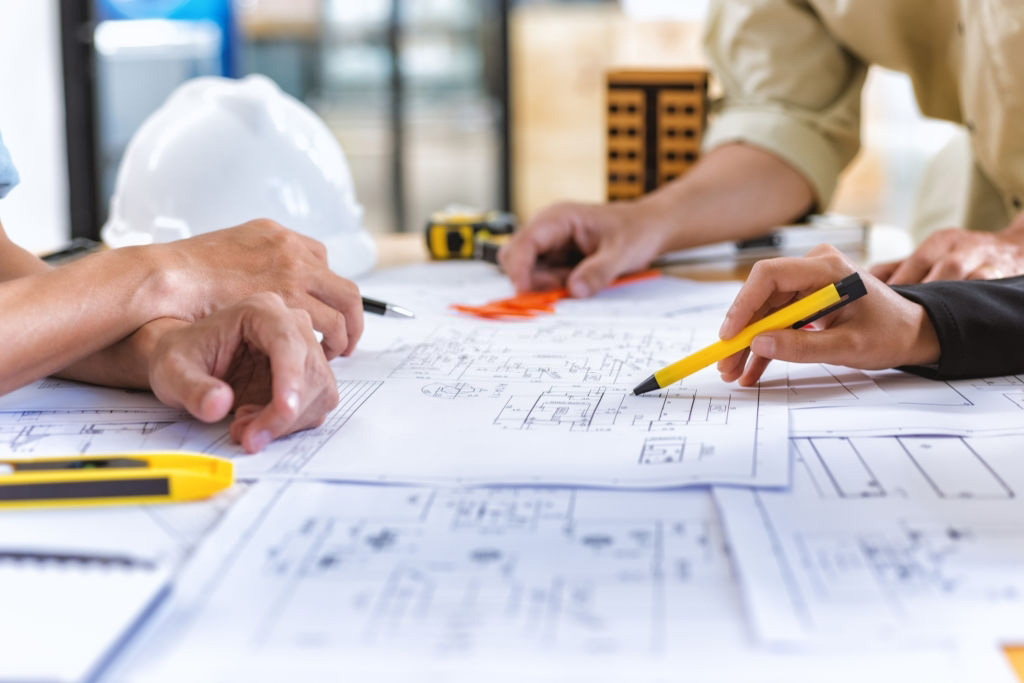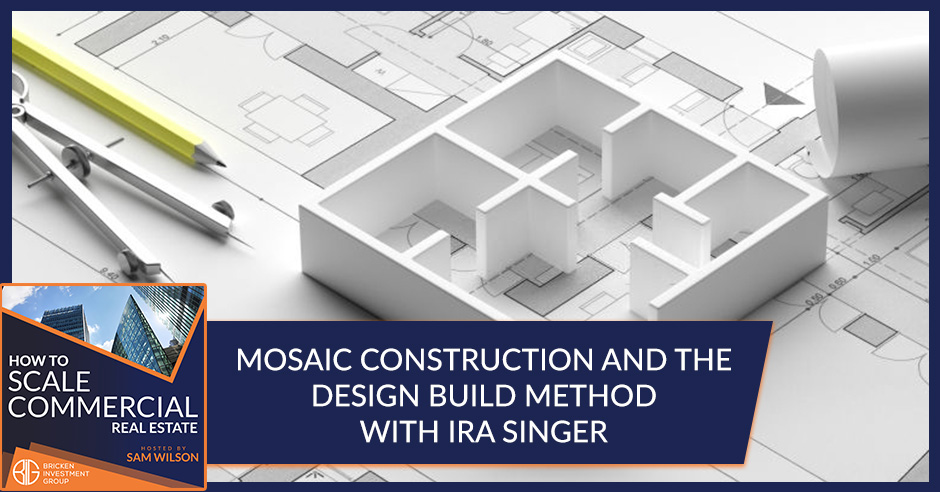Construction is often the most important part of the whole real estate process. When you build something that you want to last, you have to know the best products, the best team, and the best way to realize those pins from your dream board. Mosaic Construction Founder and COO, Ira Singer, joins Sam Wilson to talk about home improvement and the importance of hiring a good team of contractors. Ira shares how he leads new business developments and exemplifies trade and vendor relationships in Mosaic Construction. Learn more as Ira introduces us to their latest cannabis design build and shares some tips on how he manages to create spaces with personality.
—
Watch the episode here:
Listen to the podcast here:
Mosaic Construction And The Design Build Method With Ira Singer
Ira Singer leads new business development, production, excellence, process improvements, and trade and vendor relationship for Mosaic Construction. He’s a relationship builder with over 30 years of experience and he has renovated several different asset classes. Ira, welcome to the show.
Thank you so much. It’s great to be here.
The pleasure is mine. The same three questions I ask every guest who comes on the show. Can you very quickly tell us where did you start? Where are you now? How did you get there?
I started my career as a home-improvement salesman for window replacement in the Chicago market. I quickly started my own company that branched into siding, roofing and other exterior renovations, which got me into the multifamily side because of our client relationships who owned multifamily operations.
That led to my general contracting dive for interior work, unit renovations, amenities spaces, common areas, and that led to being a national general contractor working in commercial multifamily cannabis, mostly in the design-build delivery method. That’s where we are now. We’re a Chicago-based contractor with reach across the country. We got there with a growth mindset, strategic coaching and smart partners. We got there by making mistakes and learning from them.
If our readers aren’t familiar with the term when you say design-build, what is that compared to other construction methods or styles? What does that mean?
Most of the projects that your readers are involved in, I would assume, involve the building permits. Building permits require architect’s plans. In some cases, engineered plans through the village permit process, through the village planning. As a design-builder, we manage the design process with our relationships with architects. We are helping at the beginning of a project when someone is identifying an asset and they think, “I have to get an architect involved.” They design it with an owner.
It goes out to bid to 3 or 4 GCs. Not to say that architects aren’t capable and qualified, but what happens is the constructability of the project or the cost impact of what was designed does not necessarily match up to what the owner’s expectations are. When you do design-build, the contractor is leading the process. When you do design bid build, the architect is leading the process and oftentimes, it’s slower, costly and there’s less efficiency. We prefer the design-build methodology.

That makes a heck of a lot of sense. That’s a design-build versus design-build. I’ve certainly seen plenty of that where you do, go, take it to market and suddenly you’re like, “The finishes they specified were unbelievably more expensive than what we had budgeted.” Whatever it is, lots of things as you will speak to that better than I can, but that’s fascinating. You guys have done all classes multifamily. Do you do ground-up multifamily as well?
The ground-up work we do is in our cannabis sector. We started our career several years ago as renovators. Frankly, while people are living in units or living in the building and it’s being renovated as an existing asset to be upgraded is much more challenging and has a greater skill for project management and foreseeing what could be an unknown condition. That’s a much harder deployment and project to scale than out of the ground, which I won’t say is like riding a bicycle with training wheels, but it’s a lot easier to build out of the ground.
Talk to us about that. When you guys go in and look at a typical value add project, we’ll choose multifamily in this case. What are some of the things that you typically see or complications on these products that you help your client’s workaround?
The earlier that we are involved in the process to understand best what the investment strategy is for the owner-operator, we can be more critical of where the dollars are spent. My eyes on a project upfront might identify exterior compromise within the façade, roof or guttering but the owner is looking at the inside ROI to bump rent and is only concerned about the kitchens and the bathrooms.
That’s not to be ignored, but there’s a holistic approach to the building. Our ability to come in and determine if it’s a value, add C to B, is it already Class A, and it needs some upgraded amenities or some new amenities. If we can understand the budget and timing of how long they hope to hold the asset, we can better help identify where certain money is to be spent will have the greatest impact.
Is there a price point when you’re in some of these projects where it makes sense to bring a firm like yours on and is there a price point underneath, which would you say, “A project under a $1 million probably isn’t worth bringing on a partner like yourself?” Are there some numbers around that you can speak to?
Because availability is highly limited in any construction project, look for general contractors with relationships with trade partners and suppliers who are able to pivot and get speed to market.
We are a Chicago company. I would say anything within two and a half hours of the office is I won’t say $20,000 makes sense for us to go three hours away to Indiana. I would say a couple of hundred thousand dollars within the couple hours of our office makes a ton of sense. If you’re a relationship of mine, you own assets across the country, we’ve done big to small together, and I’m your trusted GC.
I’ll do anything to make sure that whatever project, not repairs, but a project that you’re considering is something that we can staff up, manage and get you over the finish line. There’s no right size million-dollar number that says Mosaic should be given the opportunity because it’s based on dollars, it’s relationship-driven and anything within my Midwest market, I would say, is up for grabs.
Talk to us about that on the people’s side of this business. When you guys go to a market, you may not necessarily have all of your crews in place. Is that right or do you guys bring in all your cruise from out of state to do these projects?
It’s a philosophy that we put in play when we started all these years ago, which is we would consider ourselves paper generals. We do not employ direct labor in any of the trade divisions. We have 23 people on our team, but they are project managers, project coordinators, human resources, customer service, bookkeeping, etc. There is not anyone who wears a tool belt employed at Mosaic Construction.
When we go in the Chicago market, we have lots of options for 3 or 4 carpenter, plumbing, roofing companies, etc. When we go to market on a larger scale, specifically for our cannabis work, we’re talking about large-size projects. It’s like a shout-out to the universe by, “Here are the plans, Mr. Universe. Here’s the scope. Who wants to sign up and say, ‘Yes?’”
Frankly, we do a good amount of chasing when we put out the plans on the bidding platform but we vet through that bidding platform, identify the trades we’re going to hire and everyone is independent on the project. We do have some companies that have grown with us and are nationally moving with us in some of the larger trade categories. We are very much regionalized in our construction work.

Another career before I got into real estate, we were part of some of that as well. We’d have some trades that followed guys like you around the country to various projects. It was fun and that was a different life for me. Let’s talk about the cannabis side of this. How did you get into that? What does that look like? Break that industry down for us. I’d love to hear your thoughts.
The Illinois market, which is where we started several ago, is, I would still say, “Considered in its infancy.” The cannabis world has been around for decades based on the ‘60s and ‘70s culture but in terms of big business and multi-state operators that are in the market across states that are either medicinal or adult-use approved. We are working in the cannabis space because one of our retail strip mall clients in Chicago applied for and was awarded three medicinal licenses and hired us because we were working with them on a different asset class.
They trusted us, hired us to do the design-build of three dispensaries in Illinois. From there, that company went on nationally to either acquire other licenses from existing operators or apply for new licenses in new states that were coming online state by state for medicinal purposes. We were going with them to design-build their dispensaries, cultivations and processing centers.
We picked up different clients within the space. As we started to have a portfolio of completed projects, we identified an opportunity to rebrand. We created a sister brand called Cannabis Facility Construction, it’s CannabisFacility.net and we completed at this point over 75 projects in 12 states in the cannabis design-build industry.
Grow facilities, that’s something that we’re seeing in a lot of the industrial warehousing and places like that turned into growth facilities. What are some of the complications for things that people should be aware of when considering that?
You should know that upstream of the actual construction, starting as all of the zoning and the person who is going to flip an industrial warehouse building into an indoor growth facility, they have to have a license, not for the construction but a cannabis license within their states. The challenges exist within the competition to obtain the license, the jurisdiction, to have zoning approval for that type of special use within their town or village.
Getting to the market requires understanding where you need to make a different choice and bring in a different product, solution, or trade.
Ultimately, it’s a highly niche build to convert an existing building. That’s a giant warehouse that had racking systems for janitorial goods and now it’s an indoor grow facility. What we’re typically seeing is the construction of a building within the existing shell of the warehouse building because the plant is so sensitive, depending on the cultivator and how they like to grow their plants. You can cook chicken 100 different ways and depending on how you grow, you can grow the plant-different ways with different HVAC systems and indoor conditions.
It is built with equipment and design to maximize the harvest, which is the whole intention of having an indoor grow facility. We are working with not only the grower but the client, engineering firm and architect to design and construct anywhere from $15,000 at the small end to $150,000 in terms of a warehouse conversion. These could be 500,000 square foot indoor facilities. Think of an Amazon center of one million square feet becoming an indoor growth facility.
We haven’t seen that yet and with the continuing conversion of states from no legality to medicinal and adult-use legality, there are going to be massive amounts of construction to provide enough grow room since we live in mostly a cold nation. You’re in Tennessee. I don’t know that you can grow twelve months a year outdoors based on some snow there. Indoor growth is the ability to convert a building and understand all the technical expertise to carry out the construction.
Over the course of those 75 or 79 projects. What have you guys even seen change as you do project to a project? What have been some things you’ve learned and said, “We’re going to do that differently on the next one?”
The biggest challenge within any construction project, I don’t care if it’s multifamily, single-family, cannabis, commercial, it doesn’t matter, it is the supply chain. Product availability is highly limited. An adapted general contractor with relationships with trade partners and suppliers needs to be able to pivot and get speed to market because the only way that the license holder is making money is by growing and selling the product.
Getting to the market and getting plants growing requires an understanding of where we need to make a different choice and bring in a different product solution or a trade that if you’re in construction right now, and you’re a good company, you’re very busy. There is a shortage of labor across the country that has always been an underlying story within the construction industry. People are going to school, but they’re not going to trade school.
The current generation coming out is looking for jobs that may not be carpentry, plumbing or trade. Having trade partners that can be on-site, follow the schedule, pass their inspections. We consider ourselves producer directors. We are the ones holding the entire operation under our contract and umbrella and it’s our responsibility to effectuate the work. Giving advanced notice to trades because they’re compromised in other jobs, checking to see if the materials came in because they’re due on the project.

There’s a whole nuance of efficiency that we have to own in cannabis. We’re working on 25 projects right now in cannabis. You can imagine how my team is spread and how the critical mass of making sure that things stay on schedule because there’s an expiration from certain jurisdictions as to when that license needs to be open and an operational bias. There’s a tremendous amount of niche knowledge that we have picked up over the course of the last several years that has built our brands and made us a reputable company where people are finding us for these opportunities.
Is there ever a consideration for you guys because this is such a niche thing for you and you have figured it out. Is there ever a consideration for you guys saying, “That’s all we’re going to do from this point forward.”
We discussed that internally, I have two business partners. The reality of how we have grown organically in many years is we’ve always been a relationship-centric business. Our residential clients, that’s where I started, became multifamily clients because they trusted me for their outside siding window job, they bought multifamily and they hired us.
The same thing with my partner, who has been many years like me. Clients are the reason why we’re in business and the relationship of being of turning down a client that would say, “I bought a medical office building. I’ve got multifamily assets.” These are areas that we have expertise. We are asset agnostic. We don’t necessarily determine the yay or nay of a project because of the type of asset that it is. It used to limit a nay that might’ve been a geographic nay like, “That’s out of our market.”
Depending on the size of the project, we’ve now learned how to mobilize construction beyond the Chicago market. We might say no to two windows in a house, like my formative years in business, but I don’t think we would say no to 150 windows in multifamily. I don’t think we’d say no to 10 units in multifamily.
I love the way you guys take care of your clients. You define this as a relationship business, which it is. I have loved learning about you guys, what you guys do in the commercial design-build industry, and especially learning about the cannabis side of things that’s certainly intriguing. Let’s jump here into the final four questions. What is one tool or resource you find you can’t live without?
I would say technology has revolutionized our business, not from the project management software that we use but also from our internal controls. Laugh if you will, but teams, more specifically, teams chat. We’re a chatting group these days. Texting is fine, but my team is doing much more efficient communication by chatting teams. Technology for us shortens the distance that we’re working geographically, handles more data, faster and trackable. I would say technology is a resource that my company, at this point, cannot live without.
Technology has really revolutionized business today by offering more efficient communication, connecting geographical distance, handling data faster, and making it more trackable.
If you give our readers to avoid one mistake in real estate, what would it be and how would you avoid it?
This is a layup. It’s hiring the right general contractor, bringing them on early, preferring a design-build methodology so there can be partnership is where we land. We are not your partners in buying the assets, but if your contractor becomes your enemy and the guy that you can stand to hear from, you’ve got the wrong general contractor.
We have been fortunate to be rehired over and over by our clients because of good communication and having a partnership mindset where we are investors. We understand your investment strategy. We want to make your asset land exactly where you plan it to be. We can either be the greatest success to that happening or the log jam that prevents it from happening.
We’ve seen it way too many times where the log jam is what it becomes. That’s fantastic. Question number three, when it comes to investing in the world, what’s one thing you’re doing right now to make the world a better place?
Be of service. I am fortunate to have been involved in a show at a young age, giving back, non-profit leadership serving on a few boards, as do my business partners. We’ve been a longstanding donation source for lots of local charities highlighted on our websites. It’s an important piece of who we are as people. By being of service to others, I help the greater world.
Ira, for readers who want to get in touch with you or learn more about you, what is the best way to do that?
Email is going to certainly put you right in front of me, Ira@MosaicConstruction.net. You can come to our website, MosaicConstruction.net, and get in touch with me. The reality is that hiring a GC is intimidating. I’ve listened to some of your shows and you’ve got some people that own fifteen doors. They have fifteen houses and they are for rent. They’re a small business owner and they’re making their way through. You hire the wrong general contractor or you are looking at an asset and you don’t know where to go, what the costs are. All of a sudden, your proforma is upside down because there’s an oops that you didn’t account for. A question is free. I’m available. If you want to tee up a question, tell me about a situation that you’re considering. There’s a construction impact. I’m happy to be of service.
Ira, thank you so much for your time. I do appreciate it.
Thank you, Sam.
Important Links:
About Ira Singer
 Ira leads new business development, production excellence, process improvements, and trade and vendor relationships for Mosaic Construction. As a relationship builder with over 30 years of experience, Ira has renovated several different asset classes.
Ira leads new business development, production excellence, process improvements, and trade and vendor relationships for Mosaic Construction. As a relationship builder with over 30 years of experience, Ira has renovated several different asset classes.

